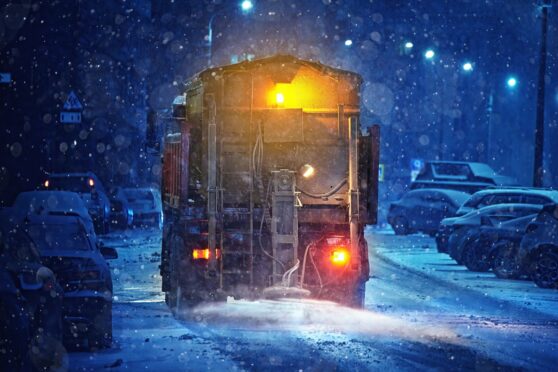
Councils could clear snow and ice from cycle paths first this winter because officials claim giving priority to roads is sexist.
Town halls across Scotland have been told to focus on treating pavements and bike routes as women are more likely to use them.
The guidance has been issued by the Improvement Service, a quango handed millions of pounds of public money every year to make local authorities work better. Now councils are preparing to leave “male-dominated” roads until last, based on a Swedish experiment.
Chiefs in Karlskoga began clearing places they believed women were more likely to be, including around infant schools, hospitals and the council’s own offices.
However, the plan ignores UK research into winter accidents, and has sparked fears this is simply another effort to persuade the public not to drive.
Hugh Bladon, of the Alliance of British Drivers, said: “This is an utterly absurd idea. The roads belong to everyone, and if delivery lorries can’t keep shop shelves stocked or the fire brigade can’t get to a house fire, men and women suffer equally. It’s fine for people in offices to pontificate about equality, but this could actually make the roads more dangerous and lead to people being injured or killed.
“This is not Sweden where they have studded tyres and live with snow. A couple of inches here and the country grinds to a halt. The truth is this is all part of a mission by the authorities to make life as difficult as possible for motorists in the hope that we’ll give up driving. It won’t work.”
The Improvement Service (IS) was set up in 2005 and last year had a budget of £10.5 million, of which £8.9m came from the Scottish Government. Among its 87 staff, six bosses – including chief executive Sarah Gadsden – shared pay packages totalling £448,000.
It’s governed by a board of nine directors, eight of them women, and is chaired by SNP councillor Shona Morrison. The controversial guidance is included in a briefing for councillors on Gender Responsive Budgeting.
It states: “Leadership is crucial to good practice on equalities issues and to embed practices across the local authority. Even in areas that seem completely gender-neutral, analysis and data can show us otherwise. Towns in Sweden carried out an analysis of how snow clearing is conducted and this led to a complete change to the order in which roads and streets were cleared. Analysis found that drivers were mostly men and pedestrians were mostly women, with women suffering the majority of accidents in the snow.
“The new approach prioritised clearing pavements and cycle paths around schools, day centres and the large workplaces before roads. This has reduced hospital admissions due to accidents in bad weather and saved money within the health service. Several local authorities in Scotland have started to consider snow and ice clearing schemes.”
But the IS has ignored crucial data. In Sweden, around 60% of vehicles are registered to men – but in Scotland 47% of driving licences are held by women.
Between October and April in the Scandinavian country, it is illegal to drive a car in testing conditions without winter tyres, making motoring safer. The IS quotes 25-year-old figures from Sweden suggesting women are three times more likely than men to be injured slipping in snow and ice. But a 2016 UK study of Cardiff’s main hospital showed that, between the ages of 16 and 60, males are actually more likely to suffer fractures in slippery conditions.
Only among the over 60s are women more likely to be injured, an age category in which menopause leaves females disproportionately affected by brittle bones.
Karlskoga decided more than a decade ago it had been unwittingly “prioritising snow removal for men above snow removal for women”.
To redress the imbalance, places where women were more likely to work were given top priority. Pavements and bike paths leading to schools were next, and only when that task was complete were roads attended to.
Councils are already facing growing criticism over Scotland’s £2.6 billion pothole backlog. And the Scottish Government has been accused of underinvesting in the network as the push for Net Zero aims to get people out of their cars.
The amount spent by central and local government on routine and winter road maintenance has grown only 5% over the last decade from £343m to £361m – which, in real terms, is a 22% cut.
Karlskoga Council said it ditched the policy in 2022 as it had no measurable benefit for women. Instead, it now prioritises roads in and out of deprived areas with low rates of car ownership so buses can continue to run, and cycle paths to schools so pupils can get to classes.
The IS denied it was telling councils to adopt the scheme. It said: “The Swedish policy is illustrative of how gender-based budgeting can apply to an area of public spending that one wouldn’t necessarily think about. Local authorities will use their own evidence to weigh up the benefits, risks and costs of any policy changes they are considering.”

Enjoy the convenience of having The Sunday Post delivered as a digital ePaper straight to your smartphone, tablet or computer.
Subscribe for only £5.49 a month and enjoy all the benefits of the printed paper as a digital replica.
Subscribe © Peter Jolly/Shutterstock
© Peter Jolly/Shutterstock